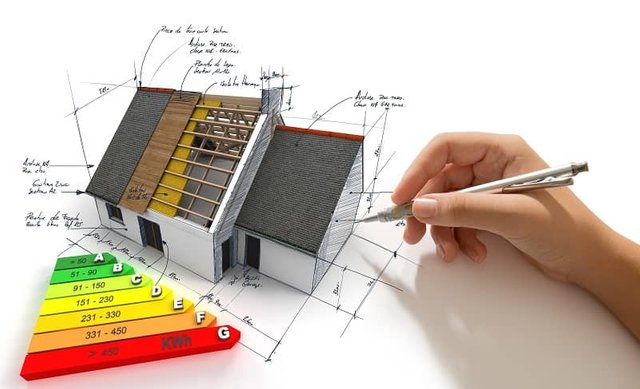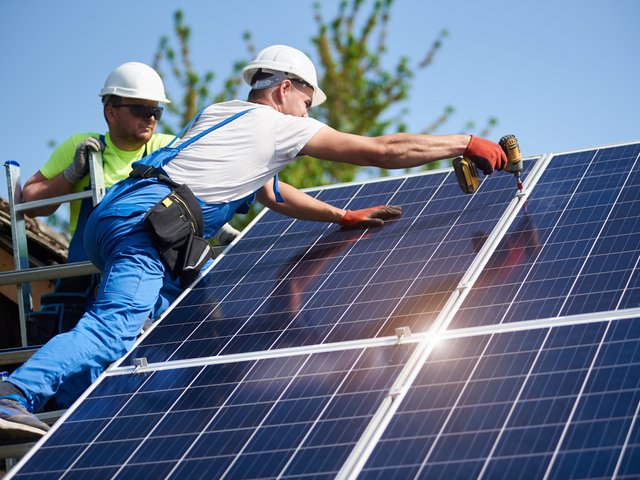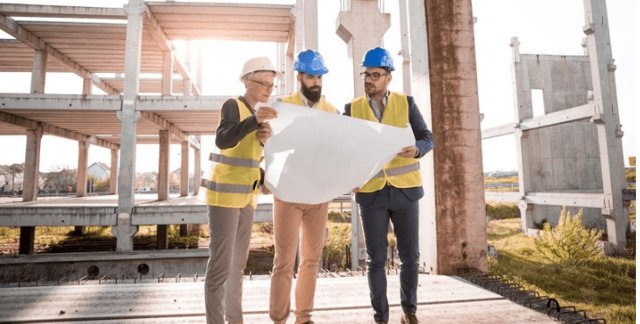How to Improve Energy Efficiency in Construction Projects-07-04-2025
Improving energy efficiency in construction projects is essential for reducing long-term operational costs, minimizing environmental impact, and ensuring a healthier and more comfortable environment for occupants. As concerns about climate change and rising energy costs continue to grow, energy-efficient buildings are becoming a priority. Below are several strategies and solutions to optimize energy efficiency in any construction project.

1. Smart Building Design
Proper building orientation: The building design should take the orientation of the building into account. Positioning windows properly can maximize solar gain during the winter and minimize it in the summer, reducing the need for heating and cooling.
Passive design: Incorporating passive design techniques such as sloped roofs, solar panels, and proper distribution of interior spaces to maximize natural light can also improve energy efficiency. Thermal materials on facades and proper natural ventilation are also essential.
2. Use of Efficient Insulation Materials
Insulation of walls and roofs: One of the biggest factors affecting the energy efficiency of a building is thermal insulation. Using materials like polyurethane foam, rock wool, or cellulose to insulate walls and roofs is key to reducing heat loss in winter and keeping the building cool in summer.
Energy-efficient windows: Windows are critical points in the energy efficiency of a building. Double or triple-glazed windows help reduce heat transfer and improve sound insulation.
3. Renewable Energy Technology
Solar panels: Installing solar panels on the roof is one of the most effective ways to generate renewable energy for a building. It not only provides electricity but can also heat water, reducing reliance on non-renewable energy sources.
Small wind turbines: In areas with consistent wind, small wind turbines can be an excellent source of clean, renewable energy.
4. Efficient Energy Systems
Efficient HVAC systems: Opting for efficient heating, ventilation, and air conditioning (HVAC) systems is crucial to reducing energy consumption. Heat pump systems, for example, are highly efficient because they extract energy from the air or ground rather than generating heat in the traditional way.
Building automation systems (smart homes): Home automation systems, such as smart thermostats, motion sensors, and lighting control systems, can significantly reduce energy consumption by automatically adjusting heating, lighting, and cooling levels as needed.

5. Use of LED Lighting and Efficient Technology
LED lighting: LED lighting uses less energy than traditional bulbs and has a much longer lifespan. Incorporating LED lighting into the building design can result in significant savings in electricity consumption.
Lighting control systems: Using motion sensors and timers for lights ensures that lighting is only used when necessary. Additionally, lighting control systems, such as dimmers, allow for adjusting light intensity based on the time of day, reducing energy consumption.
6. Installation of Low-Energy Appliances
Energy-efficient appliances: Choosing energy-efficient appliances like refrigerators, washing machines, and ovens with the **Energy Star** label can reduce electricity use in a home or building. Additionally, high-efficiency appliances tend to perform better, contributing to longer durability and lower operating costs.
7. Rainwater Harvesting Systems
Rainwater collection systems: Installing a rainwater collection system not only helps reduce the consumption of potable water but also decreases the energy required for pumping and treating water. This collected water can be used for irrigation, toilets, cleaning, and even for consumption after proper treatment.
8. Efficient Water Heating Systems
Solar water heaters: Solar water heaters use the sun’s energy to heat water, reducing the use of electric or gas energy. This is an excellent way to make water heating more energy-efficient.
Tankless water heaters: Tankless water heaters heat water instantly as needed, which means there is no need to store large amounts of hot water, reducing energy losses.
9. Energy Efficiency Evaluation and Certification

Sustainable building certifications: Obtaining energy efficiency certifications such as **LEED (Leadership in Energy and Environmental Design)** or **BREEAM (Building Research Establishment Environmental Assessment Method)** can be an incentive for both the builder and the future occupant, ensuring that the building meets high energy efficiency standards.
Regular energy audits: Conducting periodic energy audits helps identify areas for continuous improvement in a building's energy efficiency, allowing for adjustments and renovations to maintain low energy consumption over time.